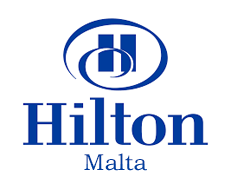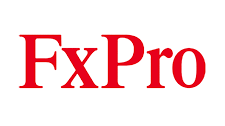Report: The Future of Healthcare
Sector: Healthcare
Publication Date: 2020
Dr Laurent Monnerat, Senior Vice President Germany, Central and Eastern Europe at Zoetis
Laurent Monnerat of Zoetis explains how digital disruption is having a considerable impact on how animal health is being practiced.
Could you please start by introducing Zoetis and the firm’s strategic positioning within the animal health sector today?
Building upon more than 60 years of experience in animal health, Zoetis today stands proud as the global leader in this field having assembled a business that not only discovers, develops, manufactures and markets veterinary vaccines and medicines, but is also able to complement that offering with diagnostics, genetic tests, bio-devices and a suite of service solutions. Our cohesive and rounded out portfolio with a laser focus across the entire animal health continuum – from prediction and detection to prevention and treatment – enables us to go deep into the subject matter while still retaining the agility and fast-reactions benefiting a pure play, mid-cap actor.
What perhaps distinguishes us most of all from our competitors is the sheer emphasis that we place upon innovation. Nowadays we have assigned a massive 1,100 of our personnel to R&D, which constitutes more than 10% of our entire workforce. Moreover we are habitually re-investing 7-8% of our annual sales back into R&D and have established in excess of 100 partnerships with academic institutions and science-driven start ups from around the world. Even structurally, we have made a point of co-locating product development capabilities alongside upstream production at many of our 30 manufacturing sites so as to be able to apply new ideas and encourage proof-of-concept.
There have been many changes within your industry segment in recent years with big pharma tending to step back from animal health and instead gravitation towards ‘pure play’ models. As the most prominent fully integrated, pure play outfit, what role has Zoetis had in shaping this narrative?
Since we went alone and IPO-ed back in 2013, the market has certainly been evolving in that direction with other entities subsequently following suit. In many respects, animal health has mirrored the market evolution of human health with assets swaps taking place as firms double down upon what they consider to be their core strengths, and a simultaneous convergence underway between the spheres of pharma and medtech as we witness an upswing in demand for preventative healthcare and companion diagnostics.
All in all, I think these changes have been for the better as they have made our industry more visible. We are no longer regarded merely as an adjunct to human pharma, but instead as a specialty in our own right. Zoetis has been active right at the forefront of many of these emerging trends. Since it spun-out from Pfizer, Zoetis has been able to pursue a range of acquisitions that it previously may not have been able to carry out under the auspices of Big Pharma, whether that constitute branching into monoclonal antibodies, fish vaccines, diagnostics or digital assets.
We’ve managed to amass sufficient scale both to conduct strong in-house R&D, but equally to attract the collaboration of important external partners and this has been critical to furthering innovation. For example, in June last year, we signed a landmark partnership with human biotech firm Regeneron Pharma to adopt its antibody technology for animals, targeting inflammatory disease and cancer.
In what ways have you been evolving your value offering to take into account shifts in demand?
Whereas previously the emphasis was squarely upon treatment, we are nowadays highly active in prevention by developing vaccines to prevent disease and point-of-care diagnostic tests to evaluate health rapidly and accurately. Our range of bio-devices presently sets the standard for in-ovo vaccination technology and for the efficiency of related operations in poultry hatcheries worldwide, as well as for rapid, consistent vaccination of farmed fish against disease threats.
Moreover we have been expanding our portfolio to encompass complementary solutions such as genetic tests to help predict wellness and performance traits in cattle and sheep so as to help inform selection of replacement animals for herds or flocks and increase the economic returns on breeding programmes. Genomic testing is becoming increasingly influential in forecasting future profitability potential, and we have thus made it our business to become one of the most widely used genomic testing sources for sheep, beef and dairy cattle.
Finally, we have made a point of adopting and integrating latest generation digital technologies. Our advanced ear tag sensors paired with data analytics are becoming ever more important tools to help vets and farmers predict and detect disease and ultimately make better healthcare decisions.
Zoetis is notable for being at the vanguard of efforts to embrace digital disruption and apply the IoT to the animal health segment. Last year, you acquired Smartbow and have been pioneering of the concept of the “connected cow.” Can you please tell us about this initiative?
Our acquisition of Austrian herd monitoring software company, Smartbow, paves the way for precision dairy farming and early disease intervention. Essentially, what they developed was an intelligent electronic ear tag that deploys machine learning and data analytics to detect signs of behavior change and disease in each individual animal.
The logic behind using ear tags is quite simple. When a cow is becoming sick, it is ordinarily quite difficult to spot in the initial stages. One of the best early warning indicators that something is wrong tends to be abnormal patterns in rumination activity. Given that a cow’s ear exhibits a very distinctive and recurring movement while ruminating, sensors within the ear tag can be deployed to pick up these characteristic movements and thus deliver real time insights on the cow’s health status.
Moreover, the Smartbow technology can simultaneously tell whether a cow is ‘in heat’ so as to offer guidance on the optimum time for insemination. It also serves to track down the precise location of the animal. We think all of this constitutes a real game changer in the way that farmers can manage their herds. Sick animals can be identified much earlier and receive treatment more quickly resulting in less discomfort to the cow, a condensed healing period and overall greater productivity.
And what about the significance of your US$2 billion acquisition of Abaxis last year?
The integration of Abaxis was all about bolstering our competencies in diagnostic instruments for veterinary point-of-care services. One of the particular characteristics of patients in animal health is that they can’t speak, so the vast majority of all animals being admitted to clinics require diagnostic test of one kind or another. Abaxis’ VetScan family of instruments has served to augment our diagnostic capabilities with hematology and chemistry analysis of blood, urine tests and rapid tests that quickly detect diseases such as heartworm, Lyme disease or tick-borne infections.
As with most of these acquisitions, they bring us cutting-edge, latest generation innovative technology that enables us to deliver an even more comprehensive and holistic offering and, at the same time, the acquired entity benefits from Zoetis vast global footprint and commercial acumen in bringing products to market. After all, at Zoetis we are able to leverage a network of 45 country affiliates where we maintain a direct presence, plus an extensive array of partnerships with local import-distributors that broadens our coverage to over 100 markets.
As much as ⅘ of all antibiotics (by weight) in the United States are consumed by animals which means that the animal health industry is on the front line when it comes to efforts to curb the phenomenon of antimicrobial resistance (AMR). What steps are being taken by Zoetis to address this escalating problem?
With few alternatives today for treating life-threatening bacterial infections in animals, Zoetis strongly supports the responsible use of antibiotics. This entails utilising early diagnostics to precipitate treatment regimes quick enough in order not to need to resort to antibiotics, and the carrying out of antibiograms to ensure optimal targeted use of those antibiotics that necessarily do have to be deployed. Above all, it means promoting proper compliance. It’s important to remember that to prevent the spread of AMR it is essential to use the right antibiotic in the right way with the right dosage. We are therefore doing everything we can to raise awareness amongst veterinarians and farmers and to instill a sense of correct antibiotics stewardship.
On the R&D side, Zoetis has an extensive and very productive research programme underway in anti-infectives, including antibiotics whereby our scientists are evaluating novel classes of antibiotics that have high potential for use in veterinary medicine, but that are unlikely to become important in human medicine. Moreover, we are doing a great deal to further explore the potential of non-antibiotic anti-infectives such as peptides. Indeed, Zoetis recently signed a landmark agreement with Colorado State University (CSU) to jointly establish an Incubator Research Lab specifically to explore the livestock immune system and target new immunotherapies, thus paving the way for new alternatives to antibiotics in food-producing animals.
What do you identify as the upcoming challenges for the animal health sector?
Powerful and durable trends are driving demand for animal health products. These include human population growth, a rising middle class in emerging markets and a steady migration of people from rural communities to urban centres. Nevertheless, our customers are continually challenged by a multitude of constraints from finite natural resources to emerging trans-boundary threats. Infectious diseases, for instance, are occurring with greater frequency and geographic impact, driven by climate change, urbanisation, and increasing global travel and trade. Worldwide up to 20% of food production animals are lost to disease annually. All of this means that to meet rising global demand for safe and affordable protein, the animal health industry and our customers must find better ways of protecting animals from ever-present and emerging diseases. Business as usual is no longer an option.
Zoetis, for its part, has positioned itself as a true long-term partner in surmounting these challenges. We spend a great deal of time out in the field listening to our customers – whether that be the veterinarians or the farmers – and understanding their day-to-day problems so as to come up with novel, but practical solutions. Moreover, we are pushing a multi-stakeholder ‘One Health’ approach that brings together human and veterinary medicine, public health, and the agriculture, food manufacturing and retailing communities to create a common understanding and ideas for the benefit of health, animals and people.

 Related Content
Related Content
The Advent of Value-Based Care Models
Medtronic is committed to working with the health community to better leverage technologies and services that improve patient outcomes, integrate care delivery and support the global shift toward value-based healthcare, says Rob ten Hoedt, Medtronic’s Executive Vice President.
Going Digital: Advancing the Future of Health
GE Healthcare has developed NASA-style command centres for hospitals allowing them to monitor critical data in real time to ensure efficient patient care. Kieran Murphy, Global CEO of GE Healthcare, talks about the benefits of artificial intelligence while sharing his vision of the digital healthcare transformation.
Drone Delivery Solves Last Mile Medical Challenge
Zipline, a drone operator specialising in delivery of medical supplies
Addressing the Global Antibiotics Crisis
The global burden of infections resistant to existing antimicrobial medicines is growing at an alarming pace while major pharmaceutical companies are backing away from developing new antibiotics. We spoke with Marc Lemonnier of Antabio, one of only a handful of private firms dedicated to new antibiotics R&D.
Report Sponsors




























